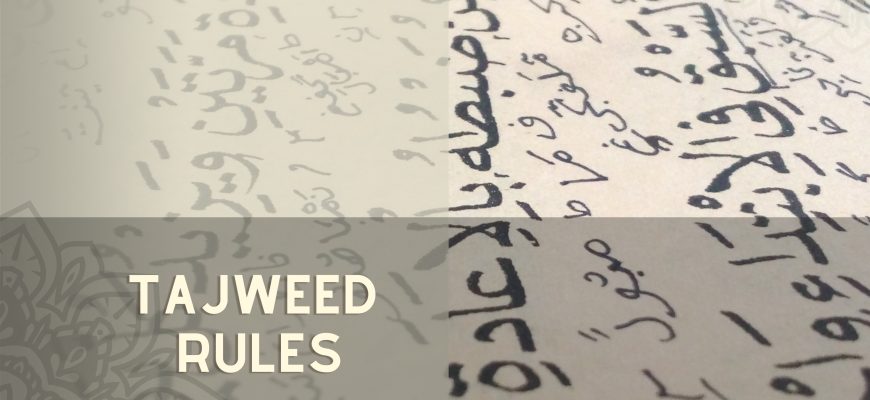- Contact Us: +971522387038
- Email:admin@islam-network.com

Tajweed Rules
A Tajweed rules course is designed to teach students the rules and principles of proper pronunciation and recitation of the Quran in Arabic. Tajweed is an essential aspect of Quranic education, as it ensures that the recitation of the Quran is done with accuracy, beauty, and reverence, as it was revealed to Prophet Muhammad (peace be upon him). The word “Tajweed” itself means “to improve” or “to make better,” and its application helps in preserving the originality and eloquence of the Quranic text.

What You Will Learn?
1. Introduction to Tajweed: The course usually begins with an introduction to the importance of Tajweed and its significance in correctly reciting the Quran. Students learn about the historical context and the scholars who developed Tajweed rules over the centuries.
2. Articulation Points (Makharij): Students are taught the correct articulation points of each Arabic letter and how to produce various sounds from different parts of the mouth and throat. Accurate pronunciation of letters is the foundation of Tajweed.
3. Characteristics of Letters (Sifaat): This section covers the unique attributes of Arabic letters, such as heavy and light letters, elongation, and assimilation. Understanding these characteristics is crucial in applying Tajweed rules during recitation.
4. Rules of Noon and Meem Mushaddad: Students learn the rules for noon saakinah (nunation) and meem saakinah (mimation) when they are accompanied by a shaddah (double diacritic). These rules govern the pronunciation of these letters in different situations.
5. Rules of Madd (Elongation): This section covers the rules of elongation and the different types of Madd, such as Madd Munfassil, Madd Mutassil, and Madd Laazim.
6. Rules of Hamzah: Students learn the various rules related to the Arabic letter Hamzah, including Hamzah Wasl (connecting hamzah), Hamzah Qat’ (cutting hamzah), and Hamzah in word beginnings and middles.
7. Rules of Qalqalah: Qalqalah refers to the slight bouncing or echoing sound produced by certain Arabic letters. Students learn when and how to apply Qalqalah in specific situations.
8. Practice and Recitation: Throughout the course, students engage in regular practice and recitation sessions to apply the Tajweed rules they have learned. They may recite specific Quranic verses or passages under the guidance of their instructor.
9. Memorization and Application: As students progress, they may also memorize selected portions of the Quran and apply the Tajweed rules they have learned to enhance their recitation.
10. Advanced Tajweed Rules: In more advanced courses, students may delve into intricate Tajweed rules and the application of Tajweed in various Quranic verses.
Tajweed courses are typically offered at Islamic centers, mosques, online Quranic education platforms, and traditional Islamic schools. The duration of the course may vary, ranging from a few weeks to several months, depending on the depth and intensity of the curriculum. The goal of the course is to equip students with the necessary skills to recite the Quran with proper Tajweed and gain a deeper appreciation for the linguistic beauty of the Holy Book.
Islam Network Copyright 2023 - All Rights Reserved
